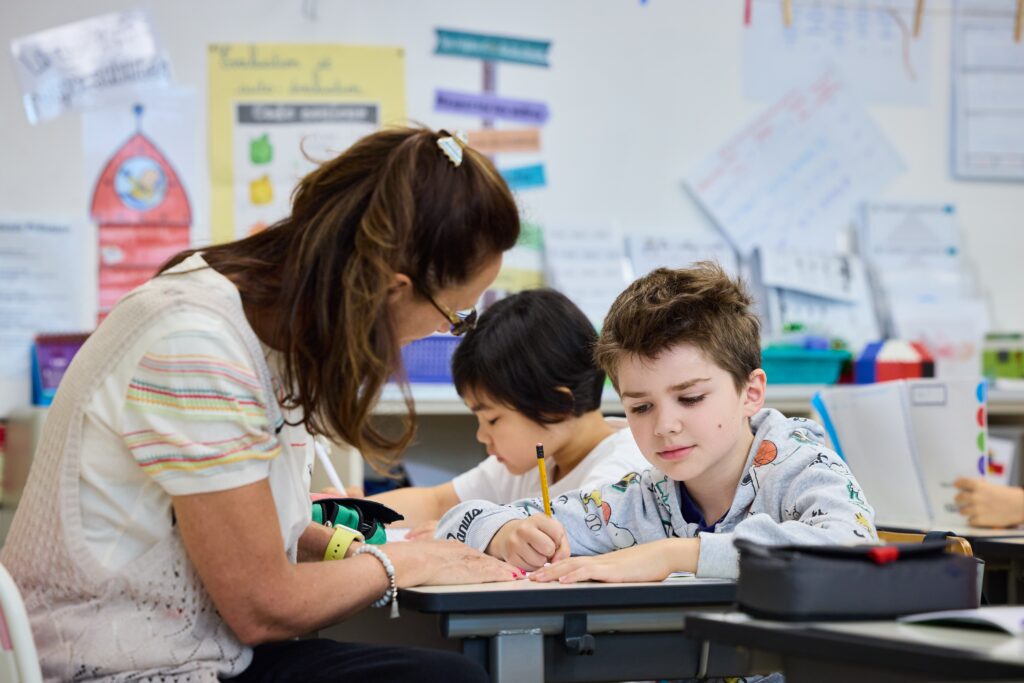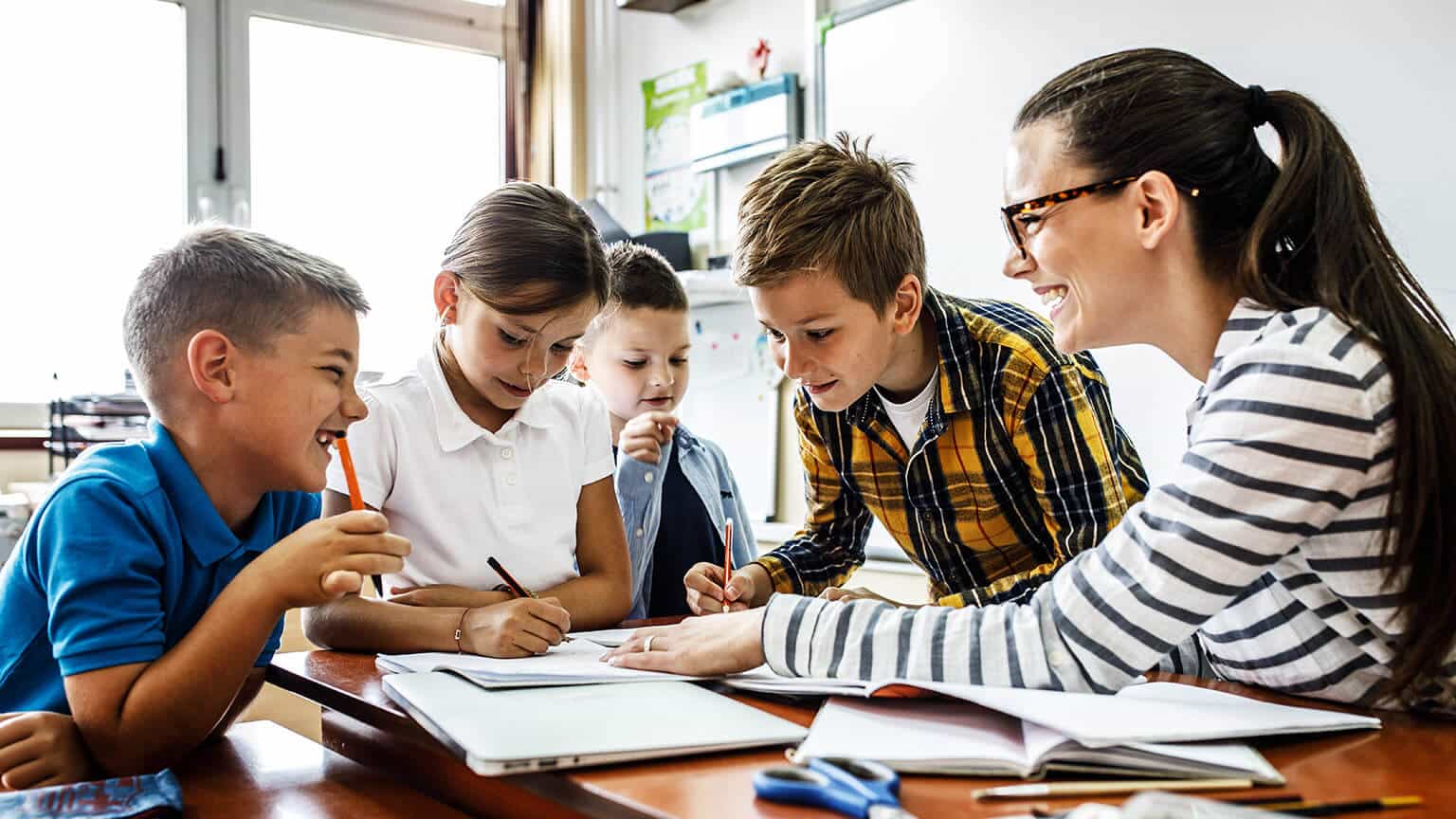Have you ever wondered how to maximize your professional development in education? Are you looking for effective methods that transform the way you teach and learn? In today’s ever-evolving world of education, it’s essential to stay up-to-date with methodologies that not only enrich the educational experience but also enhance teachers’ careers.

The importance of constantly updating our skills as educators cannot be underestimated. In a rapidly changing world, adapting to new pedagogies and technologies is essential.
Here, in this article, we’ll tell you everything you need to know about how continuing education courses can be a fundamental pillar of your professional development. These courses not only allow you to keep your professional license up to date but also provide you with new tools and approaches to improve your teaching practices.
The benefits of participating in accredited courses are numerous. These courses not only improve your teaching knowledge and skills but also offer you the opportunity to interact with other professionals in the sector, which can result in an invaluable network of contacts. Furthermore, continuing education is a key element for remaining competitive in the educational field, allowing you access to better job opportunities and ongoing professional development.
Introduction to Collaborative Learning
Collaborative learning represents a significant transformation from the traditional educational approach. Instead of focusing on unilateral instruction from the teacher to the student, this methodology encourages active student participation in the warning process.
By working in groups, students engage in an exchange of ideas that not only enriches their understanding of the content but also fosters vital skills for teamwork and effective communication.
The heart of collaborative learning lies in its ability to build learning communities in which each member plays an active and critical role in the academic and personal development of others.
This approach helps prepare students for the real world, where teamwork and communication are essential for professional success. Through this methodology, students directly experience how their contributions can influence and improve the collective outcome.
In addition to improving interpersonal skills, cooperative learning allows students to explore different perspectives and approach challenges from multiple angles. By fostering a mutually supportive environment, this pedagogical strategy transforms the classroom into a dynamic space where knowledge is built collectively.
We invite you to read more about how this powerful pedagogical tool is reshaping education in our full article.
Benefits of Collaborative Learning
The benefits of collaborative learning are extensive and profoundly impactful for student development. This methodology not only fosters better information retention but also prepares students for the future workforce, where skills such as conflict resolution and critical thinking are essential.
By learning to work together, students develop a deeper and more nuanced understanding of the topics covered, resulting in more meaningful and lasting learning.
At the core of collaborative learning is students’ ability to debate, negotiate, and synthesize information—skills that are crucial in both academic and professional life.
This approach promotes inclusion and respect for diverse opinions and learning styles, enriching the educational experience for all participants. By fostering an environment that values open and constructive dialogue, students learn to value and utilize feedback, a vital component of personal and academic growth.
Collaborative learning empowers students within the learning process, encouraging them to take a more active role in their education.
This approach not only improves time management and organizational skills, but also increases motivation and learning satisfaction. To understand more about how these benefits transform classrooms and contribute to student success, we invite you to explore our full article.
Key Components of Collaborative Learning
The success of collaborative learning depends on several fundamental components that facilitate effective collaboration and meaningful learning. One of the pillars of this methodology is positive interdependence, where students understand that their success depends on the success of their peers. This principle fosters an environment of support and collaborative effort toward common goals.
Another crucial component is developing effective communication skills among students. The ability to express ideas clearly and actively listen to others is essential for the functioning of any team.
Collaborative learning promotes these skills through activities that require students to exchange ideas, offer feedback, and build consensus.
Finally, group and self-assessment play an important role in this educational approach. These practices not only allow students to reflect on their learning and that of their peers but also help them identify areas for improvement and celebrate successes.
For a deeper understanding of how these components work together to enrich the educational environment and improve learning outcomes, please see our detailed article.
Effective Strategies for Collaborative Learning
Implementing effective strategies is essential to maximizing the benefits of collaborative learning. Among the most effective techniques are problem-based learning, structured discussions, and the use of visual tools such as concept maps. Each of these strategies brings unique value to the educational process, encouraging active and meaningful student participation.
Problem-based learning, for example, encourages students to confront practical and realistic challenges, requiring them to apply their theoretical knowledge in concrete situations.
This technique not only enriches the learning experience but also prepares students to face similar challenges in professional settings. Furthermore, structured debates provide a platform for students to articulate and defend their ideas, promoting respect for others’ perspectives and developing critical and argumentative skills.
Additionally, the use of concept maps helps students visualize and connect complex ideas, facilitating a deeper understanding of the material studied.
This tool is particularly useful in collaborative learning because it allows groups of students to clearly and organizedly view the relationships between different concepts, improving communication and collective understanding.
Problem-Based Learning Techniques
Problem-based learning is an effective collaborative learning technique that confronts students with complex and realistic situations, requiring them to use their critical thinking and problem-solving skills to find viable solutions. This approach not only improves analytical and practical skills but also prepares students to apply what they’ve learned in real-world, challenging contexts.
In this method, students work in teams to break down the problem, research different approaches, and propose innovative solutions. This process not only encourages greater information retention but also teaches students to value the contributions of their peers and combine their skills and knowledge to achieve a common goal. In the end, students not only learn about the topic at hand, but also how to learn and work effectively in teams.
The success of this technique lies in its ability to make learning relevant and applicable, allowing students to see the direct impact of their studies in real-life situations. Furthermore, by facing challenges together, students develop a sense of community and collaboration that transcends the classroom, preparing them for collaborative work in any professional or personal context.
Promoting Debate and Discussion
Encouraging structured discussions is crucial in the context of collaborative learning. These discussions allow students to explore and argue different points of view, which not only enriches their understanding of the material but also refines their communication and argumentation skills.
By debating, students learn to construct logical arguments and defend their ideas with solid evidence—essential skills in both academic and professional settings.
In a debate, each student has the opportunity to express their thoughts while listening to and evaluating the opinions of others. This exchange of ideas promotes a deeper and more diverse understanding of the topics discussed and teaches students the importance of constructive dialogue and respect for diverse perspectives. Debates in a collaborative setting foster an inclusive and dynamic learning environment where all students can feel valued and motivated to actively participate.
The structure of these debates is designed to ensure that all students have a voice and that the discussions remain focused and productive. Educators can guide these sessions to ensure they stay on track and that all points of view are considered equally.
This approach not only improves students’ communication skills but also teaches them to consider multiple aspects of a problem before concluding—a crucial skill in any area of life.
The Role of Technology in Collaborative Learning
In the current context, marked by digitalization, technology has become a fundamental pillar of collaborative learning. Through digital tools and online platforms, a range of possibilities opens up that transform the way students interact and learn together.
These technologies not only facilitate real-time communication and interaction, but also provide educational resources that can be shared and modified collectively.
The use of technology in collaborative learning allows students to overcome geographical limitations, allowing participants from different parts of the world to collaborate on common projects as if they were in the same classroom. These digital tools provide flexible scheduling, enabling learning to adapt to individual needs, rather than the other way around.
On the other hand, the integration of emerging technologies such as augmented reality and artificial intelligence into collaborative learning is beginning to show enormous potential.
These technologies not only enhance student interactivity and engagement but also provide new ways to experience and understand information, which can lead to a deeper and more lasting understanding of the content covered.
Digital Tools for Collaboration
The integration of digital tools into collaborative learning has revolutionized education, offering platforms such as learning management systems (LMS) and instant communication applications that facilitate constant and fluid interaction between students. These tools create a dynamic and accessible learning environment where educational resources, such as documents, presentations, and videos, can be shared and discussed in real time.
Group functionality helps keep all participants aligned with the learning objectives. This not only encourages greater accountability among students but also improves team coordination, ensuring that each group member contributes effectively to the collaborative project.
Specifically, in AFOE, Nebrija University’s courses incorporate these technological tools to optimize collaborative learning, facilitating efficient educational management focused on the success of all students.
Finally, these technological tools also support a variety of interactive assessment methods, such as online quizzes and discussion forums, which can be used to measure student understanding and engagement on an ongoing basis.
Overcoming Barriers with Technology
The use of technology in collaborative learning has been especially crucial in overcoming physical and temporal barriers, allowing education to be more inclusive and accessible.
In hybrid or fully online educational contexts, these technologies ensure that collaboration is uninterrupted, maintaining the quality and interactivity of the educational process regardless of distance.
This technological approach allows students to participate in collaborative work sessions through video conferencing and work-sharing platforms, where they can interact, discuss, and solve problems together, replicating the dynamics of a traditional classroom in a virtual environment.
The flexibility offered by remote access makes it easier to include students who may be limited by health, geographic location, or personal commitments.
Technology has proven to be a key enabler in removing barriers that have traditionally limited access to and effectiveness of collaborative learning.
By embracing and adapting to these technological advances, educational institutions not only improve their students’ learning experience but also prepare new generations for a future where collaboration and technology will continue to be indispensable.
Find out more about collaborative learning with AFOE
Collaborative learning is not simply an educational methodology; it is a transformation in the way we conceive teaching and learning in an increasingly interconnected society. This pedagogical approach emphasizes the importance of teamwork and peer interaction, elements that have proven essential for comprehensive development in both academic and professional contexts.
In a world where communication and collaboration skills are vital, understanding and correctly applying these principles becomes essential.
Adopting collaborative learning also means adapting to the needs of a generation that values active participation and the exchange of ideas. The benefits of this methodology include not only greater student engagement and motivation ubutalso an improvement in their ability to solve problems together and develop critical skills essential in any professional field.










